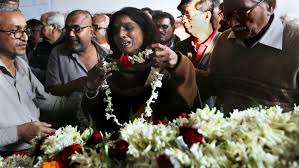
The issue of sexual violence in India remains one of the most pressing social challenges. This article takes a deep look at the root causes, including cultural, legal, and systemic factors that perpetuate such violence. While acknowledging the severity of the crisis, we aim to highlight potential reforms, raise awareness, and promote constructive discussions to address this deeply entrenched issue.
Through policy changes and educational reforms, it is crucial to reduce violence and protect the rights of women and children
Introduction: A Nation Drenched in Blood and Tears
India, a country that boasts of its cultural heritage, spirituality, and economic progress, is simultaneously home to one of the most horrifying epidemics of sexual violence in human history. Women and girls across the country live in perpetual fear, unable to walk the streets without the looming threat of rape, assault, and murder. Every day, countless women—whether young girls, teenagers, married women, or elderly grandmothers—become victims of this sickening brutality, while the authorities remain indifferent and the perpetrators walk free.
What makes this crisis even more horrifying is that rape in India is not just a crime—it is a symptom of a deeply ingrained cultural rot, an ingrained misogyny that refuses to let women exist as independent, autonomous beings. Rape is not only a crime of opportunity but a systematic weapon of oppression used by men against women, often with the silent approval of society, police forces, and even courts.
This article exposes the brutal reality of India’s rape epidemic, bringing forth horrifying cases, systemic failures, and the paralyzing fear that grips both citizens and tourists alike. It will examine the cultural and political factors that make sexual violence a never-ending nightmare, proving that as long as the current mindset prevails, this crisis will never truly disappear.
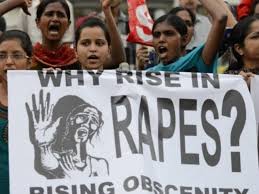
The Endless Wave of Atrocities: Rape as an Everyday Horror
The numbers alone are enough to turn the stomach. Officially, India reported 31,677 cases of rape in 2022—that’s an average of 86 rapes every single day. This statistic alone is a disgrace, but it is also a lie. Studies estimate that up to 99% of rape cases in India go unreported, due to fear, shame, threats, and the absolute lack of trust in law enforcement.
The reality is not just thousands but millions of women and girls being raped, tortured, and killed every year in India. And yet, this violence continues unabated, protected by a legal system that favors rapists over victims.
A Glimpse into India’s Most Notorious Rape Cases
Some crimes are so grotesque that they shake the world. Yet, even after global outrage, nothing changes in India. Here are just a few cases that highlight the country’s darkest reality:
The Nirbhaya Case (2012) – The Rape That Shook the World
A 22-year-old medical student, Jyoti Singh, was brutally gang-raped and tortured by six men on a moving bus in Delhi. An iron rod was thrust into her, damaging her internal organs beyond repair. She fought for her life but succumbed to her injuries. The horror of this case led to nationwide protests, but have things improved? No.
Hathras Horror (2020) – Caste-Based Rape and Murder
A 19-year-old Dalit woman in Uttar Pradesh was gang-raped, her spine broken, and her tongue cut off. Instead of bringing justice, authorities cremated her body in the dead of night without her family’s permission, trying to cover up the crime.
Hyderabad Veterinarian Case (2019) – Rape and Burning of a Young Woman
A 26-year-old veterinarian was abducted, gang-raped, strangled, and then burned alive under a bridge by four men. Her charred remains were discovered the next day.
Israeli Tourist Assault (2025) – Foreign Women Not Safe Either
A 27-year-old Israeli woman and her Indian host were gang-raped by an entire group of men while stargazing in Karnataka. Her male friend was murdered by drowning, showing that even foreigners are easy prey in this country.
And the list goes on. Every single day, countless similar crimes are committed against Indian women, girls, tourists, and even infants.
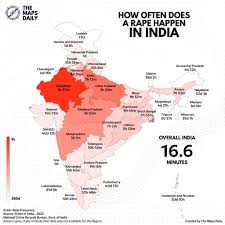
The Paralyzing Fear: Living as a Woman in India
Indian Women: Prisoners in Their Own Country
Women in India do not live—they survive. From the moment they step outside their homes, they are conditioned to be constantly on guard. The fear of sexual violence dictates their clothing, their route home, their choice of transportation, and even their career decisions.
- Public transport is a war zone. Women face daily groping, harassment, and threats on buses, trains, and even taxis.
- Walking alone at night? Impossible. Many women would rather be locked in their homes than risk being alone in public after sunset.
- Workplaces are no safer. Many women report being harassed, blackmailed, or assaulted by male colleagues and bosses.
Tourists: The Foreign Women Who Thought They Were Safe
India’s reputation as a dangerous place for women is well-deserved. Tourists from around the world have faced horrific sexual violence while visiting the country.
- In 2013, a Swiss tourist was gang-raped while camping with her husband.
- In 2014, a Danish woman was gang-raped and robbed in Delhi.
- In 2025, an Israeli woman became the latest victim in Karnataka.
India is one of the few countries where women from all backgrounds—locals and foreigners alike—are equally unsafe.
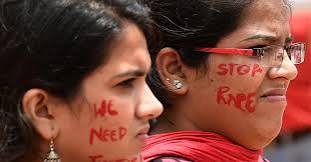
The Useless Authorities: A System Built to Protect Rapists
The police, the judiciary, and even the government itself are complicit in this crisis.
The Police: Corrupt, Lazy, and Hostile
- Victims who report rape are often mocked, ignored, or blamed.
- Police officers frequently refuse to register complaints, forcing victims to beg for justice.
- Many officers are rapists themselves—there have been countless cases of police personnel sexually assaulting women.
The Courts: A Mockery of Justice
- Most rapists never see a courtroom. Conviction rates remain shockingly low.
- Cases drag on for years, forcing victims to relive their trauma over and over.
- In many cases, rapists bribe judges or use political connections to walk free.
The Government: Empty Promises and Zero Action
- After every high-profile rape case, politicians make fake promises about reforms.
- Yet, India’s rape statistics continue to rise every year.
- Instead of fixing the problem, many politicians blame women for “provoking men” by wearing jeans or using mobile phones.
A Culture That Encourages Rape
At the heart of this crisis lies India’s deep-rooted misogyny. Women are seen as property, objects, or burdens, not as equals.
Toxic Masculinity and the “Boys Will Be Boys” Mentality
- Many Indian men are raised with the belief that women exist to serve them.
- “Honor” killings occur when women refuse arranged marriages or seek independence.
- Women who are raped are often disowned by their families, while rapists face no shame.
Religious and Caste-Based Justifications for Rape
- In some communities, raping lower-caste women is seen as a “punishment” or a right of upper-caste men.
- Some religious leaders have even blamed rape victims, saying they “must have done something sinful.”
The Bitter Truth: Why This Crisis Will Never End
India’s rape epidemic is not an accident—it is a symptom of a society that refuses to change.
- The justice system is a joke. Rapists know they will likely get away with their crimes.
- The culture enables sexual violence. Women are treated as second-class citizens.
- The government does not care. No real reforms are being implemented.
Until India radically transforms its legal system, culture, and attitudes toward women, rape will continue to define the country’s reality.
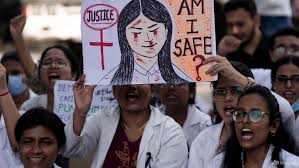
Conclusion: India’s Women Deserve Better
India is not just failing its women—it is actively betraying them. This crisis is a stain on the nation’s so-called “progress” and a testament to the barbarism that still lurks beneath its modern façade.
The world must not look away. The women of India must not be silenced. Until the rape culture is eradicated from its very roots, India will remain a land of fear, suffering, and impunity—a country where being born female is a life sentence of danger.
